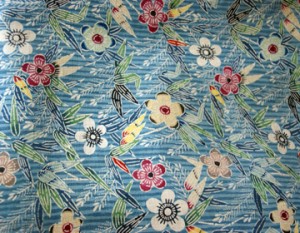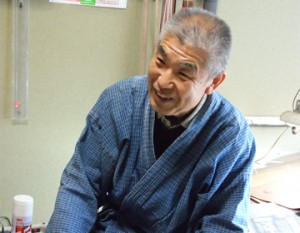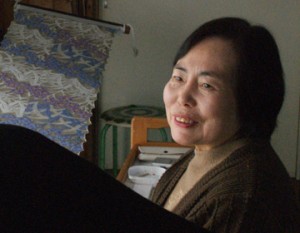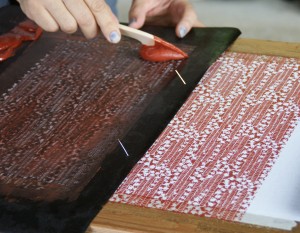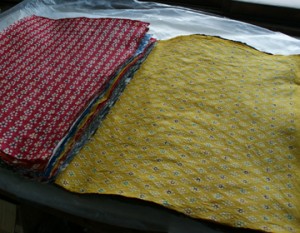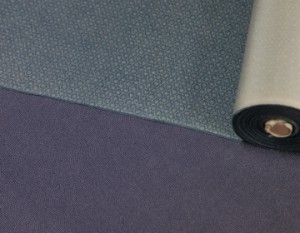The emergence of ”Edo komon”

During the peaceful Edo period, when there was no fighting, many feudal lords tried to make their ”kamishimo (ceremonial wardrobe of a samurai)” as lavish as possible. But the Edo government felt the lords were taking it too far, and banned lavish garments. The lords, on the other hand, still wanted to express their sense of fashion, so they adopted ”kamishimo” with ”komon” (small patterns) on it, so that the fabric looks to be solid-colored from a distance, but you see the small fine patterns up close. The stencils used to dye the fabric in the Edo period became the original design of what is known as ”Edo komon.”
”Wow!” said Nakata who was impressed when Masao Aida showed him the ”Edo komon” stencils in his studio. It was hard to imagine how such detailed patterns were cut out. The details of the pattern makes the fabric look solid-colored in the distance, but one can see the detailed patterns up close. The fine elaborate work is just astonishing.
A lifetime of learning
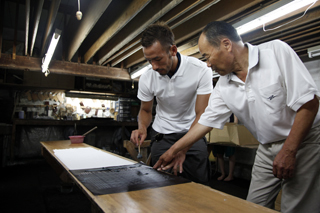
Aida showed us ”the most detailed stencil that can be carved by a person”. It is a stencil carved by the late Hiroshi Kodama who was a Living National Treasure. Nakata could not help but say ”Amazing…” as he studied it closely.
Aida’s work is to dye white fabric using the stencils. He places the stencil on the fabric and applies glue over it. The dyeing process starts when the glue is dried. The pigment will only dye the fabric where there is no glue. The process requires highly honed skills, since the stencil is about the size of a sketchbook, and it has to be moved and precisely matched to the previous pattern for the pattern to be seamless. On top of that, you have to be extra careful that the glue is applied evenly.
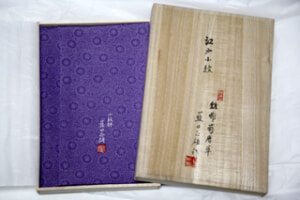
It takes 3 years to place the stencil, 8 years to make the right glue, and 9 years to apply the glue evenly with a spatula.
Aida says the whole process is a lifetime of learning.
”Even a single drop of sweat on the fabric will ruin it. So it’s really difficult in the summer. I have to take a lot of breaks during the hot season,” Aida told us. The work requires total concentration.
Made with such delicate craftsmanship, the kimono carries a refreshing image of beauty. The pattern is subtle but it is chic and stylish. It is the product of a relentless pursuit of beauty through Japanese craftsmanship.




